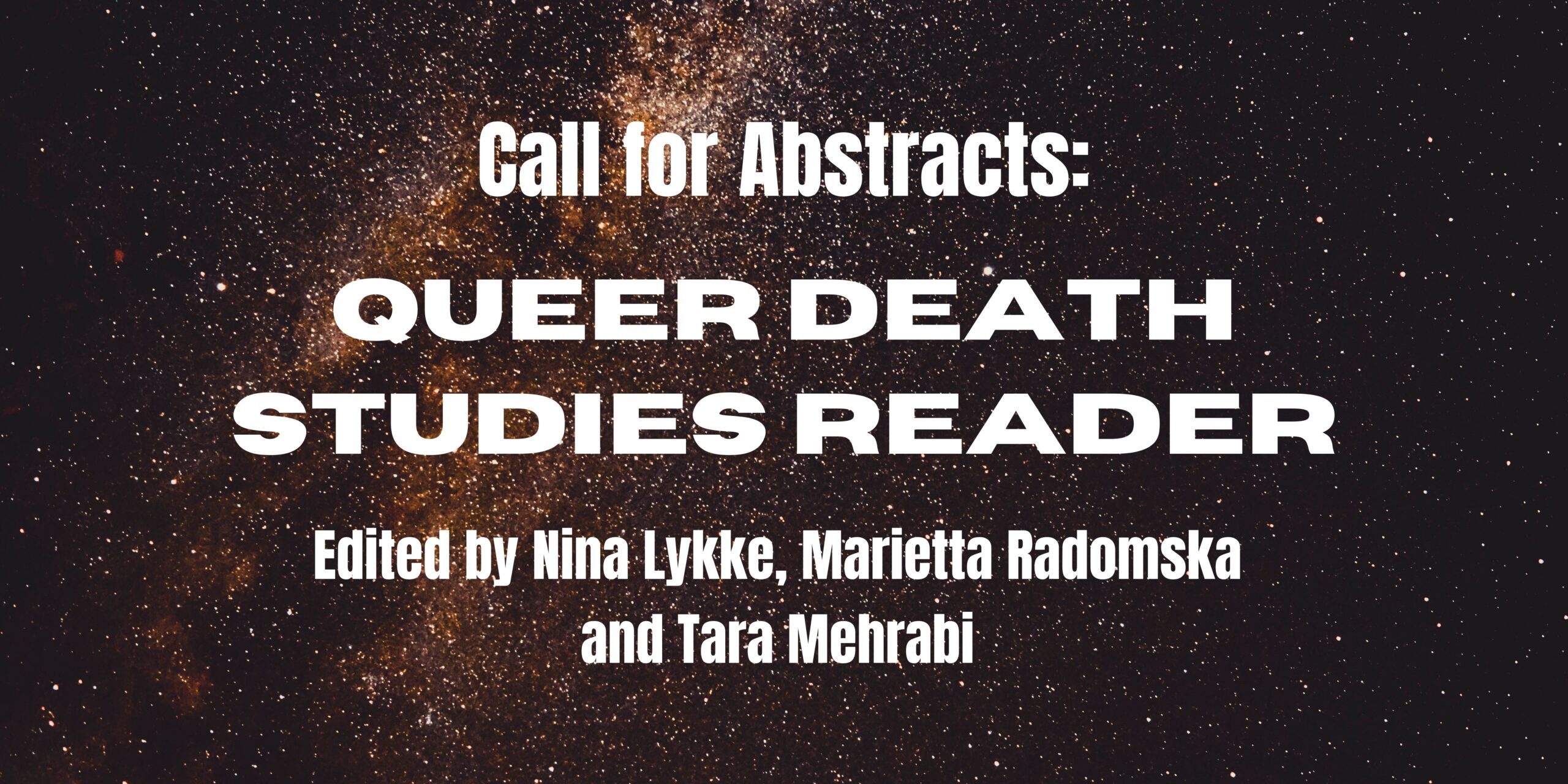-

PH Webinar: Ecologies of Death, Ecologies of Mourning vol. II: A Roundtable
Welcome to The Posthumanities Hub & The Eco- and Bioart Lab Webinar “Ecologies of Death, Ecologies of Mourning vol. II: A Roundtable” 30th March 2023, 13:15 […]
-

Ecologies of Death, Ecologies of Mourning: Volume I
International Symposium 23RD MARCH 2023, 13:00 – 18:00 Organised by The Eco- and Bioart Lab, in collaboration with Queer Death Studies Network VENUE: ARBETETS MUSEUM (THE MUSEUM OF […]
-

Call for abstracts: Queer Death Studies Reader. Edited by Nina Lykke, Marietta Radomska and Tara Mehrabi
The field of Queer Death Studies The planned reader will gather a wide range of contributions to the field of Queer Death Studies (QDS). This […]